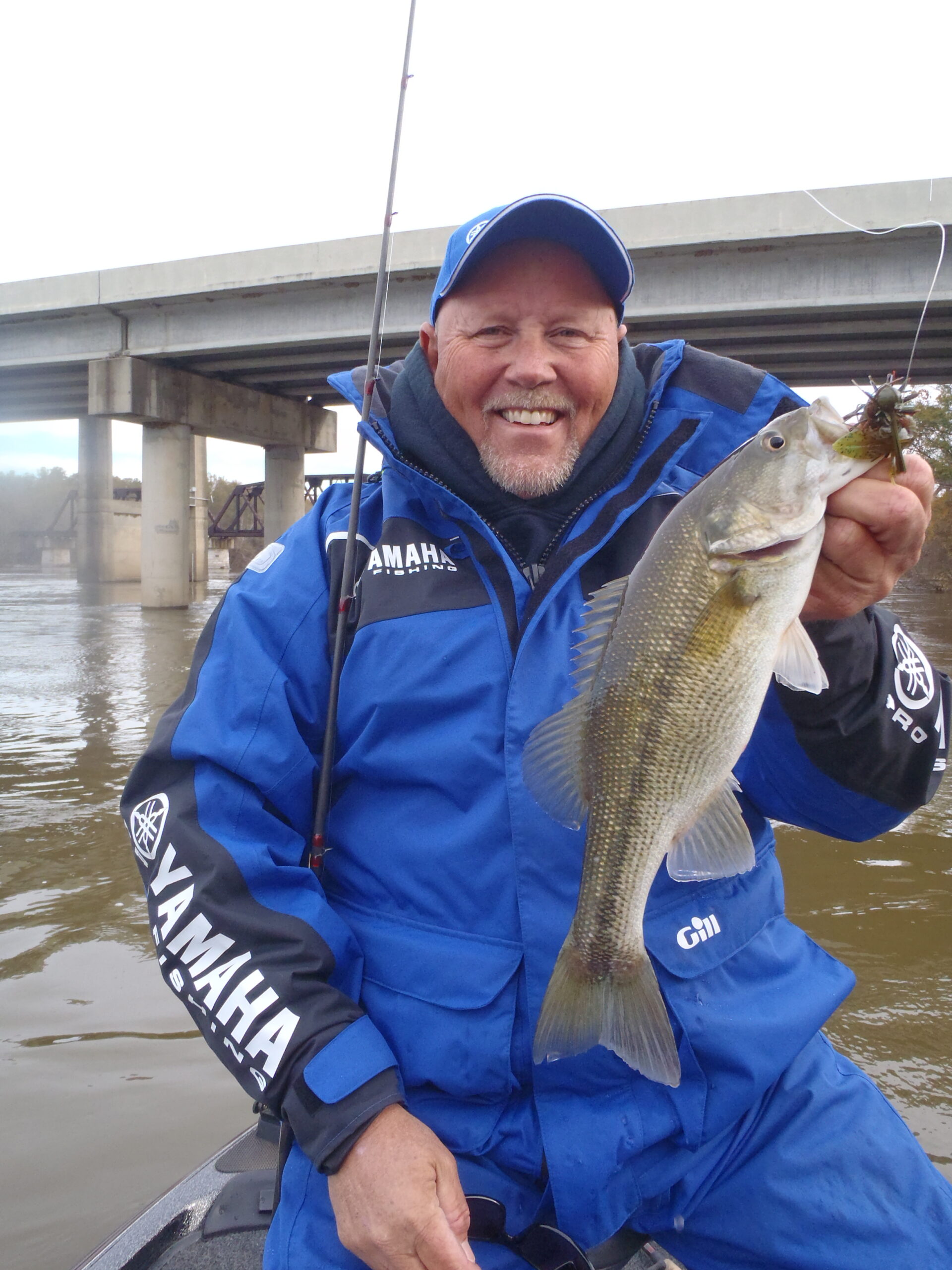
Its cold outside, the rut is making it a good time to go deer hunting and you might not be thinking much about fishing. But the big spotted bass at Lay Lake are on a very predictable pattern and you can catch some of the biggest spots of the year right now.
Lay Lake on the Coosa River east of Birmingham is known for its big spotted bass. The Alabama Power Lake dammed in 1914 produces three and four pounds spots consistently and bigger fish are caught each year. There is also a good population of largemouth but in the winter the spotted bass fishing is more consistent.
Matt Herren grew up fishing Lay Lake and other Coosa River lakes in the area. His father took him fishing in ponds and on Lay Lake as a kid and they watched some tournament weigh-ins and got interested in tournament fishing. They started fishing wildcat tournaments on Lay Lake in 1988.
From his success there he entered the Redman tournaments in 1989 and came in second in the points standings in the BAMA Division that first year. By 2003 he was fishing the FLW Tour and now fishes the BASS Elite trail.
Since turning pro, Matt has qualified for six BASSMaster Classics, including the 2016 tournament, and six FLW Championships. This past year he tied for 10th place in the Angler of the Year point’s standings in BASS. In his career he has won over 1.2 million dollars in tournaments.
“In January the shad are moving up the river an into the creeks and the big spots are following them and feeding,” Matt said. He prefers to go after quality spots up the river if possible rather than fishing further down the lake. He said you can catch fish any day in January further down the lake but for the big ones he wants to fish up the river from the Locust Creek area to the Neely Henry Dam.
The day we went in early December the river was not fishable. We checked the Neely Henry Dam and all floodgates were open and all generators running. The river was three or four feet high and the current extremely strong. When it is like that the fish hunker down and are very hard to catch since you can’t even control your boat very well. So we made lemonade, fishing from the Highway 280 Bridge downstream, and Matt caught some fish under very tough conditions.
No matter which way he goes Matt will have the same baits rigged. His prime bait is a three eights to one half ounce Santone Lures Texas Finesse Jig tipped with a Reaction Innovations Petite Twerk or Smallie Beaver trailer. He goes with browns and greens if the water is clear or darker colors like black and blue if the water is stained.
A Santone three eights to one and one half ounce white or chartreuse and white spinnerbait is good for covering water faster, and he uses heavier baits the deeper he is fishing. A DT 6 or DT 10 crankbait in shad colors is also good for covering water and finding fish.
A Megabass 110 jerkbait and a Santone Piglet Shaky Head round out his arsenal of lures. The shaky head will have a Reactions Innovations Pocket Rocket worm on it. With those lures fished on a Kistler Rod with the action for that lure, teamed with Gamma fluorocarbon line, covers all the types of cover and structure he wants to fish in January.
The following places give you a variety of kinds of spots to fish, no matter what the conditions. If the river is high and fast fish the first six and similar places downstream. If it is normal, with some current but not so fast you can’t fish effectively, fish upstream from the Highway 280 Bridge.
1. N 33 17.626 – W 86 21.462 – We put in at Pop’s Landing in Tallaseehatchee Creek in Childersburg and started fishing at the mouth of it. When the current is strong the fish will often hold in the mouths of sloughs and creeks like this and feed in the eddies there. Start by casting a spinnerbait right to the rocks on the riprap bank on the downstream point since the fish will often be right on the bank.
As you get out into the river work downstream on the same side and fish all the way to the Highway 280 Bridge. If the current is strong point your boat upstream and let it drift downstream holding it as slow as you can with your trolling motor. Cast at an angle upstream, letting your bait work back to the boat with the current. Fish a crankbait and spinnerbait here, then follow up with a jig and pig.
Cast the jig right to the bank and use a heavy enough jig to keep it on the bottom in the current. If the water is high try to get your bait down to the rocks along the edge of the normal full pool channel. Bass will often hunker down behind those rocks and feed on baitfish and crawfish washed to them.
When you get to the bridges work the eddies behind the pilings on both the railroad and highway bridge. Matt got a keeper spot on his jig behind one of these pilings when we fished.
2. N 33 16.711 – W 86 23.289 – Running down the river the houses and docks stop and you will go a good ways down to the mouth of Bailey Creek opening on your left without seeing any docks. There is a picnic pavilion on the point and a dock just inside the upstream point, with riprap around it.
Stop on the upstream side of the slough and work the point as you go downstream. Cast into the slough and work a spinnerbait, crankbait and jig and pig back out to the eddy of the current. Also fish the downstream point of the slough.
If the current is real strong you can position your boat inside the mouth of the slough and cast your bait out, working it into the eddies on both points like a baitfish coming from the river into the slough.
3. N 33 16.353 – W 86 24.664 – Running down the river just before it starts a bend to the right you will see some big rocks on the bank on your left. This marks the start of a bluff outside bend of the river and is an excellent place to catch spots in January.
Start at the first visible rocks and fish downstream, keeping your boat in about 25 feet of water and casting to the edge of the water. Work your bait back out to about 15 feet deep. A jig and pig and a shaky head worm are both good here.
You can fish a long way down this bank since it is a sweeping outside bend and the rocks run all along it. Rocks are the key this time of year, if they have baitfish on them. Watch your depthfinder and if you are not seeing balls of bait don’t spend a lot of time in the area.
It is good to fish your bait with the current no matter how fast the current is moving. Some current is good and will make the fish bite better, even if the water is very cold. If the current is normal work upstream, casting ahead of the boat at an angle as you work into the current.
4. N 33 16.976 – W 86 25.636 – Across the river and downstream Deer Lick Creek enters the river as it starts a big horseshoe bend to the left. This big creek has a house trailer on the downstream point well back from the river. The upstream point of it has a defined underwater point coming off it and bass will feed on it in all current situations.
Stop upstream of the slough and fish the upstream point as you go past it. Then swing around into the slough and fish across it, casting your jig and pig and jig head worm out into the river and bringing it up and across the point. There are some stumps on the point that hold fish so probe for them with your baits.
5. N 33 14.547 – W 86 27.443 – Run on down the lake to the power plant on your right. This coal fired steam plant discharges warm water into the river and that warmer water draws shad and bass to it in January. Stop just upstream of the discharge and fish downstream.
Cast a spinnerbait or crankbait into the discharge and let the current carry it downstream as you fish it back. The river current and the discharge current will make eddies here that the bass hold in to feed so concentrate on them.
Also, fish a jig and pig or jighead in the discharge and downstream of it, too. The warmer water will say near the bank going downstream, making it better this time of year.
6. N 33 13.382 – W 86 27.840 – Further down the river the channel splits into three parts with islands separating them. The main marked channel is to the left side going downstream. Just upstream of the first marker where the channel goes to the left is a bluff bank. There is a house trailer sitting on top of the bluff upstream of the channel marker.
Stop out in front of this trailer and fish downstream, letting the current take your boat downstream backwards. Fish to the shallow gravel point where the bluff runs out and there is a small cove.
Fish the bluff bank and the big rocks on it with a jig and pig and jig head worm. Your boat should be in 25 feet of water a short cast off the bank. The current was almost too strong to fish here the day we went, even this far downstream, but Matt got a good keeper spot and we both missed fish in the current.
When you get to the shallow gravel point near the channel marker fish all over it with your jig and pig and jig head worm, too. Fish will run in on this point to feed.
7. N 33 19.766 – W 86 21.839 – The following places are all upstream of the Highway 280 Bridge and you can fish them for big spots as long as the floodgates are not open. One or two generators running produce enough current to improve the fishing but more than that makes it tough.
Go to the water intake tower on the right going upstream. It is just downstream of the golf course. This big structure breaks the current and bass will stack up on the downstream side of it as well as in front where pipes or indentions create an eddy.
Keep your boat downstream and cast a spinnerbait and crankbait up past the building and let them come back with the current. If you can hold your boat on the downstream side just downstream of the structure cast a spinnerbait to the wall and let if flutter down it. Also fish your jig head worm and jig and pig down the walls in the eddies.
8. N 33 20.157 – W 86 22.112 – Across the river and a little upstream is the mouth of Locust Creek. If the current is very strong you can fish it like the ones downstream but if the current is right start at it and work upstream.
Matt likes to slowly work up the river bank, casting at an angle ahead of the boat, all the way to the powerlines. He will work a crankbait or spinnerbait from the edge of the water back to the boat. If the fish are holding deeper along the bank he will go to a heavier spinnerbait to get down to them. He will also work a heavier jig and pig or jig head worm to keep it on the bottom deeper.
9. N 33 22.176 – W 86 20.567 – Something different that is always good in the winter, no matter what the conditions, is the back end of Flipper Creek where there is a big spring. The spring keeps the water a steady temperature, must warmer than the river water in the winter, which draws shad and bass, and it will be clearer if the river muddies up.
Go in the mouth of Flipper Creek and to the very back of it. You will be right beside the road and railroad that are in the back end of it just up the bank. Fish all the way around the area in the back, working all your baits around the wood cover here. Also cast right down the middle of the area to cover the bottom there.
10. The following spots are between the upstream railroad bridge and the Logan Martin Dam. Most of them are very similar and they are easy to find. The first is the railroad bridge itself. Matt says to fish all the pilings on it with spinnerbait, crankbait and jigs. Work the eddies caused by these pilings, just like at the downstream railroad bridge and the Highway 280 bridge.
Rateliffes Island is a big island that splits the river upstream of the railroad bridge. Just upstream of it is the mouth of Kelly Creek on your left and you can fish the mouth of it like the other creek mouths if the current is strong. If the current will let you, Matt says fish the banks on either side of it for a half mile both ways. Work up the current casting ahead of the boat and fishing all your baits back with the current.
Just across from Kelly Creek and a little upstream the right bank going upstream is an outside bend of the river Matt says fish it for a mile going upstream, as long as the rocks hold up on the outside bend. This is a typical bank that drops off fast and has rocks that you need to fish. Baitfish in the area makes it much better.
A little further upstream there is a small island not far off left the bank. Fish the banks on both sides of it and behind it, too. As in all places, look for current breaks to hold fish.
Matt warns that you should always wear your life jacket when up the river. The current is dangerous and the cold water can make you lose control of your muscles fast. Don’t take chances.
You can catch some quality spots right now on Lay Lake. Follow Matt’s suggestions for baits to use and kinds of places to fish and you will soon forget it is winter.
Matt does not guide but he is setting up an on the water electronics school. He will show you how to set up your Hummingbird electronics like his boat is equipped and show you how to use them to find fish. He can do the same for Lowrance units. You can contact him through his Facebook page at https://www.facebook.com/matt.herren.52
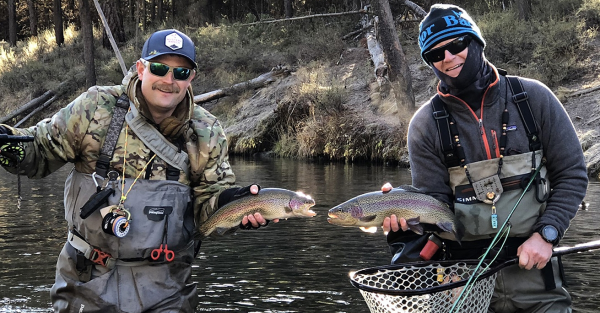 Dedicated fly-anglers don’t stop fishing in the winter. Instead they adjust their tactics to the colder conditions.
Dedicated fly-anglers don’t stop fishing in the winter. Instead they adjust their tactics to the colder conditions.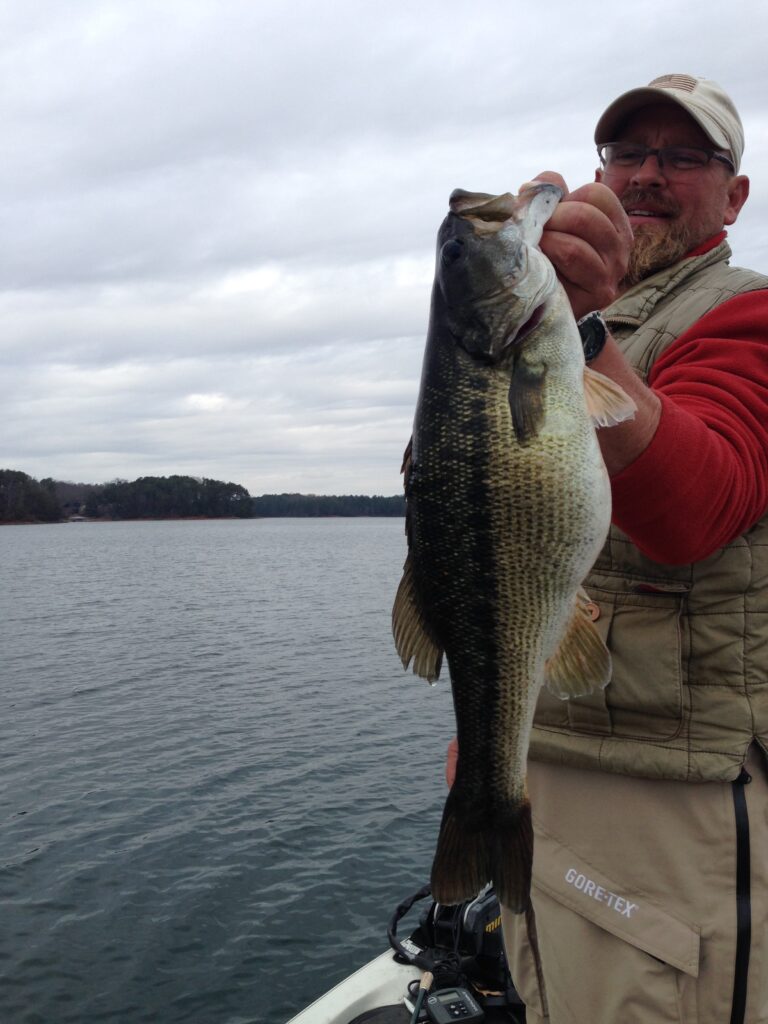
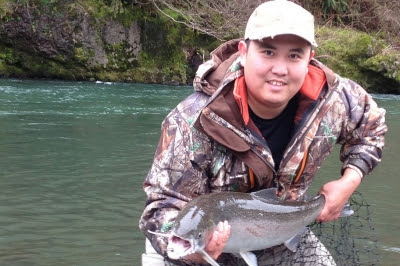


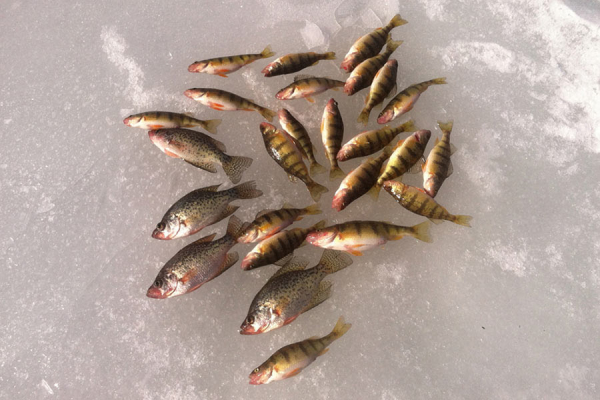
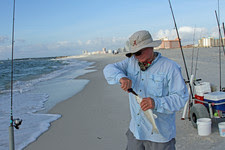
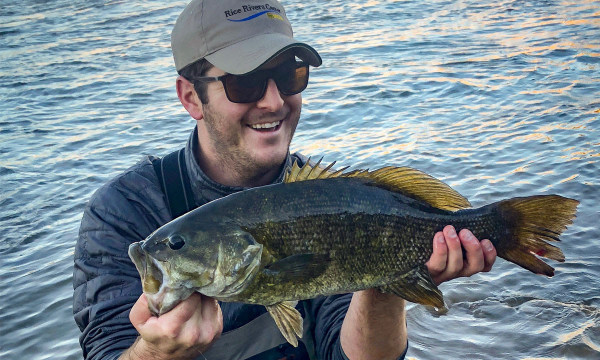 The author with a trophy smallmouth bass from the James River in downtown Richmond. Fall is one of the best times of the year to target big smallmouth bass across the state.
The author with a trophy smallmouth bass from the James River in downtown Richmond. Fall is one of the best times of the year to target big smallmouth bass across the state.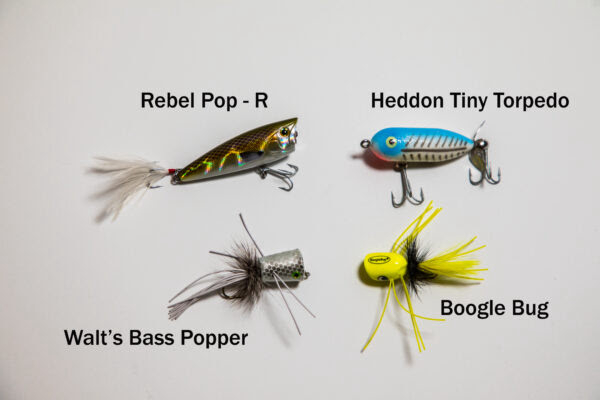 September and October are great months to fish topwater lures and flies for Virginia smallmouth bass. Photo by Meghan Marchetti/DGIF.
September and October are great months to fish topwater lures and flies for Virginia smallmouth bass. Photo by Meghan Marchetti/DGIF.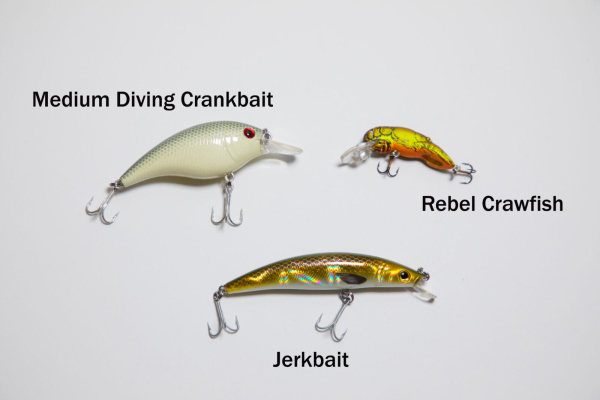 Subsurface lures work well when targeting fall smallmouth. Photo by Meghan Marchetti/DGIF.
Subsurface lures work well when targeting fall smallmouth. Photo by Meghan Marchetti/DGIF.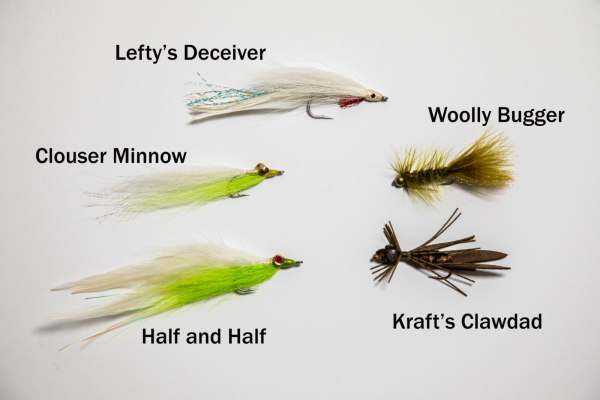 Fishing large streamers is a great technique for targeting big smallmouth bass. Consider fishing a sinktip or full sinking line in mid to late fall on our larger Virginia rivers, especially in higher flows. Photo by Meghan Marchetti/DGIF.
Fishing large streamers is a great technique for targeting big smallmouth bass. Consider fishing a sinktip or full sinking line in mid to late fall on our larger Virginia rivers, especially in higher flows. Photo by Meghan Marchetti/DGIF.